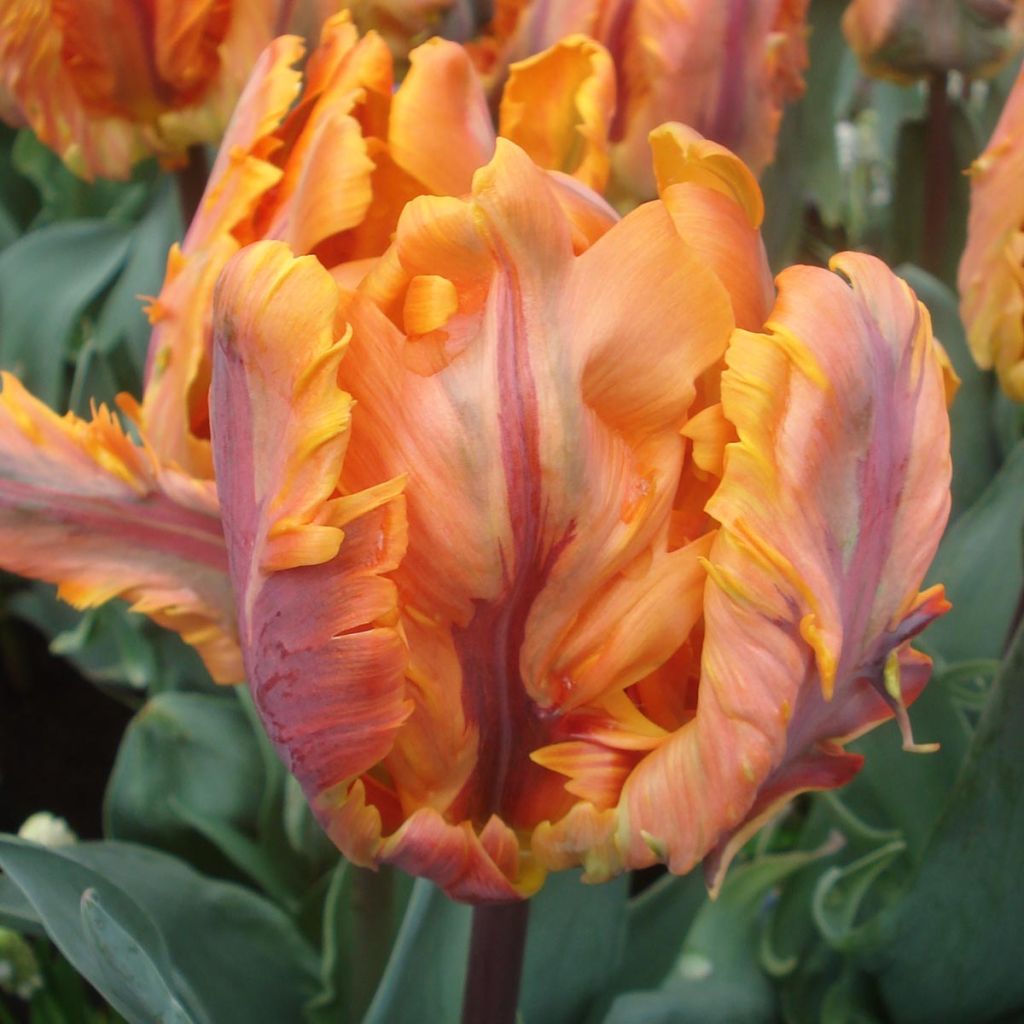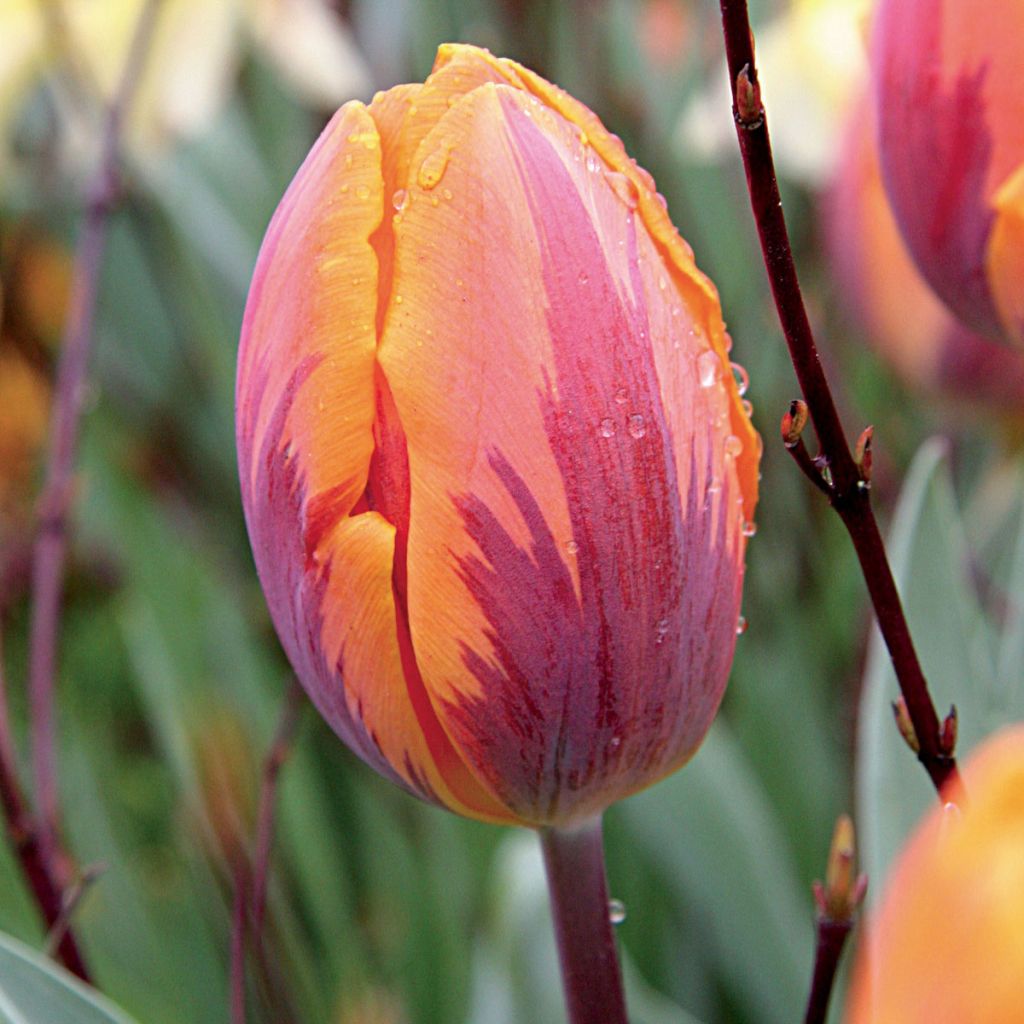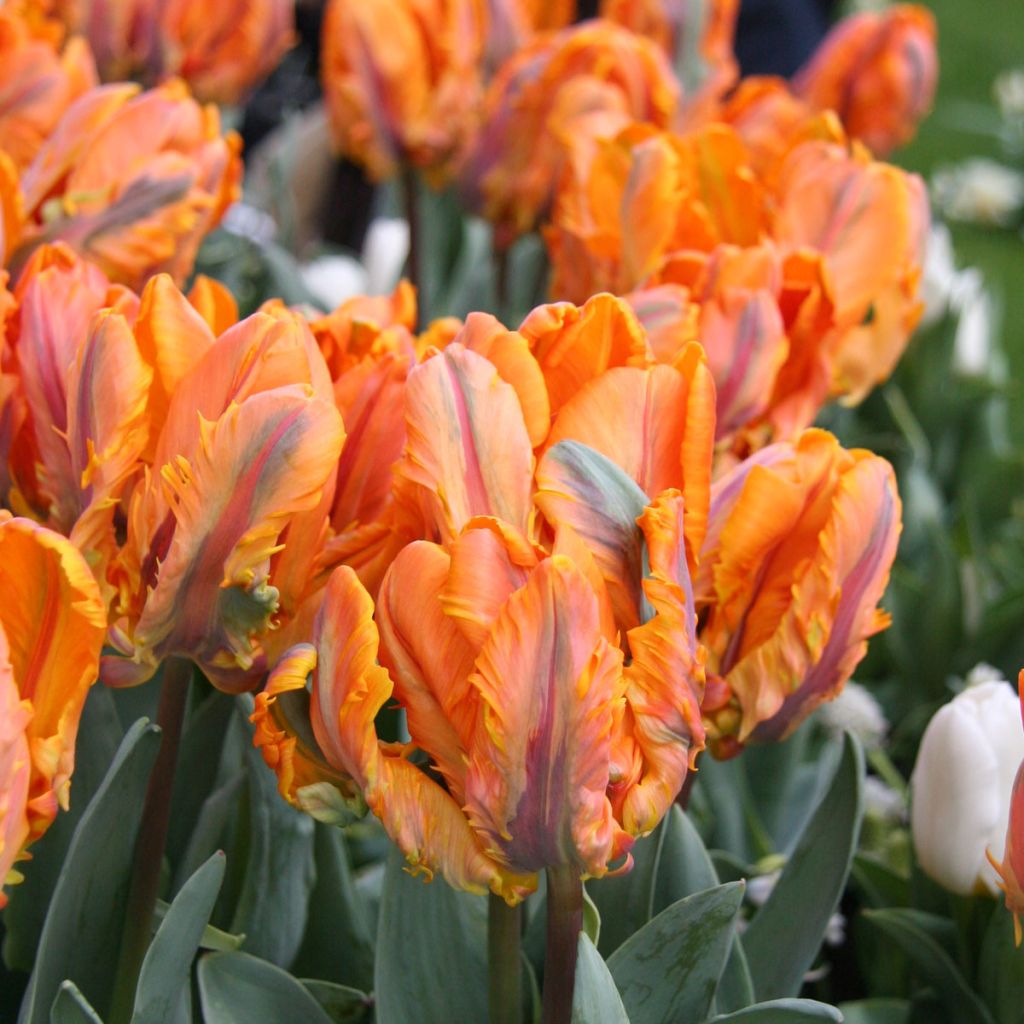

Tulipe Perroquet Princesse Irene Parrot


Tulipe Perroquet Princesse Irene Parrot


Tulipe Perroquet Princesse Irene Parrot
Tulipa Princess Irene Parrot - Parrot Tulip
Tulipa Princesse Irene Parrot
Parrot Tulip
Either did not bloom at all, or was swapped with a dark orange (almost red) parrot variety, there is always a 25% error rate in the tulip varieties you have, very disappointed... I will not order anymore. I had planned mixed flowerbeds with tulips of specific shapes and colours, last year's result was not in line with 25% of the tulips ordered, and the same this year. Ok, you refunded a portion, but it would be better to be vigilant and consistent in your supplies because the errors occur too often with tulips (and even crocuses).
Anais, 02/05/2020
This plant carries a 6 months recovery warranty
More information
We guarantee the quality of our plants for a full growing cycle, and will replace at our expense any plant that fails to recover under normal climatic and planting conditions.
From €5.90 for pickup delivery and €6.90 for home delivery
Express home delivery from €8.90.

Does this plant fit my garden?
Set up your Plantfit profile →
Description
Tulipa Princess Irene Parrot is a beautiful tulip with classic lines that amazes with its flamboyant colours. Its flowers are orange, streaked with purple. The combination of colours is daring, but the overall effect is tasteful. The stem is short, sturdy, and very dark brown, contrasting with the beautiful colourful flower, making it an interesting subject in the garden or in pots and planters. Early flowering.
Tulipa 'Princess Irene Parrot' belongs to the Liliaceae family. Of horticultural origin, it is currently classified in the group of 'Parrot Tulips', whose main characteristic is to present huge flowers with twisted, puffy, ruffled, and irregularly fringed petals. 'Princess Irene Parrot' is also obtained by mutation (sudden appearance of new characteristics that are maintained in subsequent generations). It is not very tall (30cm (12in)) and its flower is medium-sized. Its palette of streaked colours, inherited from the highly appreciated species that is the 'Prinses Irene' tulip, includes orange, green, and shades of red and yellow. The original shape of the parrot tulip adds extra charm, making this tulip anything but boring, especially when its buds slowly open in a vase. It flowers in March-April, at the beginning of the tulip season.
Plant the bulbs in autumn, from September to December, at a depth of 15 cm (6in), and 10 cm (4in) apart in ordinary, slightly acidic, neutral, or slightly alkaline, loose, well-worked, and well-draining soil. Never add manure or poorly decomposed compost to the planting soil, as this could cause the bulbs to rot. 'Princess Irene Parrot' tulip will grow well in moist to dry soil. Plant it in a good, sunny or semi-shady location. Once flowering is over, it is advisable to remove the seed heads to avoid exhausting the plant.
With their wealth of colours and stunning and variegated flowers, suitable for both borders and bouquets, the fame of parrot tulips is well established. In the 18th century, they were called 'monstrous'; this group developed greatly in the 1930s when it was discovered that irradiating bulbs with X-rays caused this mutation. They are now among the most planted varieties, unmatched for bringing charm to pots or sunny gardens. Do not forget to consider the height and flowering period when designing your borders, as these can vary significantly from one cultivar to another. It is a good idea to plant a few more bulbs for cutting, as they make superb cut flowers that last a long time in a vase.
Regarding botanical species: tulip species are found in most of the Old World, from Western Europe to China and Japan, passing through Eastern Europe, Asia Minor, and Central Asia. Their distribution area also includes North Africa and the Indian subcontinent. The centre of diversity of the genus is located in the Pamir and Hindu Kush Mountains and the steppes of Kazakhstan.
There are various wild species, many of which are endangered. They are either large cultivated tulips found in fields, the most well-known being the Agen tulip (Tulipa agenensis), or small tulips found in wooded areas or among rocks in the mountains. In cultivation, they are called "botanical tulips," and one of the most common is the wild tulip (Tulipa sylvestris), which often used to grow in the shelter of vines and whose subspecies australis is known as the southern tulip.
Report an error about the product description
Plant habit
Flowering
Foliage
Botanical data
Tulipa
Princesse Irene Parrot
Liliaceae
Parrot Tulip
Cultivar or hybrid
Planting and care
Plant the bulbs in autumn, from September to December, at a depth of 15 cm (6in), and 10 cm (4in) apart in ordinary, slightly acidic, neutral, or slightly chalky, loose, well-worked, and well-draining soil. Never add poorly decomposed manure or compost to the planting soil, as this could cause the bulbs to rot. The 'Princess Irene Parrot' tulip will thrive in moist to dry soil. Plant it in a sunny or partially shaded location. After flowering, it is best to remove the seed heads to avoid exhausting the plant.
Planting period
Intended location
Care
-
, onOrder confirmed
Reply from on Promesse de fleurs
Haven't found what you were looking for?
Hardiness is the lowest winter temperature a plant can endure without suffering serious damage or even dying. However, hardiness is affected by location (a sheltered area, such as a patio), protection (winter cover) and soil type (hardiness is improved by well-drained soil).

Photo Sharing Terms & Conditions
In order to encourage gardeners to interact and share their experiences, Promesse de fleurs offers various media enabling content to be uploaded onto its Site - in particular via the ‘Photo sharing’ module.
The User agrees to refrain from:
- Posting any content that is illegal, prejudicial, insulting, racist, inciteful to hatred, revisionist, contrary to public decency, that infringes on privacy or on the privacy rights of third parties, in particular the publicity rights of persons and goods, intellectual property rights, or the right to privacy.
- Submitting content on behalf of a third party;
- Impersonate the identity of a third party and/or publish any personal information about a third party;
In general, the User undertakes to refrain from any unethical behaviour.
All Content (in particular text, comments, files, images, photos, videos, creative works, etc.), which may be subject to property or intellectual property rights, image or other private rights, shall remain the property of the User, subject to the limited rights granted by the terms of the licence granted by Promesse de fleurs as stated below. Users are at liberty to publish or not to publish such Content on the Site, notably via the ‘Photo Sharing’ facility, and accept that this Content shall be made public and freely accessible, notably on the Internet.
Users further acknowledge, undertake to have ,and guarantee that they hold all necessary rights and permissions to publish such material on the Site, in particular with regard to the legislation in force pertaining to any privacy, property, intellectual property, image, or contractual rights, or rights of any other nature. By publishing such Content on the Site, Users acknowledge accepting full liability as publishers of the Content within the meaning of the law, and grant Promesse de fleurs, free of charge, an inclusive, worldwide licence for the said Content for the entire duration of its publication, including all reproduction, representation, up/downloading, displaying, performing, transmission, and storage rights.
Users also grant permission for their name to be linked to the Content and accept that this link may not always be made available.
By engaging in posting material, Users consent to their Content becoming automatically accessible on the Internet, in particular on other sites and/or blogs and/or web pages of the Promesse de fleurs site, including in particular social pages and the Promesse de fleurs catalogue.
Users may secure the removal of entrusted content free of charge by issuing a simple request via our contact form.
The flowering period indicated on our website applies to countries and regions located in USDA zone 8 (France, the United Kingdom, Ireland, the Netherlands, etc.)
It will vary according to where you live:
- In zones 9 to 10 (Italy, Spain, Greece, etc.), flowering will occur about 2 to 4 weeks earlier.
- In zones 6 to 7 (Germany, Poland, Slovenia, and lower mountainous regions), flowering will be delayed by 2 to 3 weeks.
- In zone 5 (Central Europe, Scandinavia), blooming will be delayed by 3 to 5 weeks.
In temperate climates, pruning of spring-flowering shrubs (forsythia, spireas, etc.) should be done just after flowering.
Pruning of summer-flowering shrubs (Indian Lilac, Perovskia, etc.) can be done in winter or spring.
In cold regions as well as with frost-sensitive plants, avoid pruning too early when severe frosts may still occur.
The planting period indicated on our website applies to countries and regions located in USDA zone 8 (France, United Kingdom, Ireland, Netherlands).
It will vary according to where you live:
- In Mediterranean zones (Marseille, Madrid, Milan, etc.), autumn and winter are the best planting periods.
- In continental zones (Strasbourg, Munich, Vienna, etc.), delay planting by 2 to 3 weeks in spring and bring it forward by 2 to 4 weeks in autumn.
- In mountainous regions (the Alps, Pyrenees, Carpathians, etc.), it is best to plant in late spring (May-June) or late summer (August-September).
The harvesting period indicated on our website applies to countries and regions in USDA zone 8 (France, England, Ireland, the Netherlands).
In colder areas (Scandinavia, Poland, Austria...) fruit and vegetable harvests are likely to be delayed by 3-4 weeks.
In warmer areas (Italy, Spain, Greece, etc.), harvesting will probably take place earlier, depending on weather conditions.
The sowing periods indicated on our website apply to countries and regions within USDA Zone 8 (France, UK, Ireland, Netherlands).
In colder areas (Scandinavia, Poland, Austria...), delay any outdoor sowing by 3-4 weeks, or sow under glass.
In warmer climes (Italy, Spain, Greece, etc.), bring outdoor sowing forward by a few weeks.


































